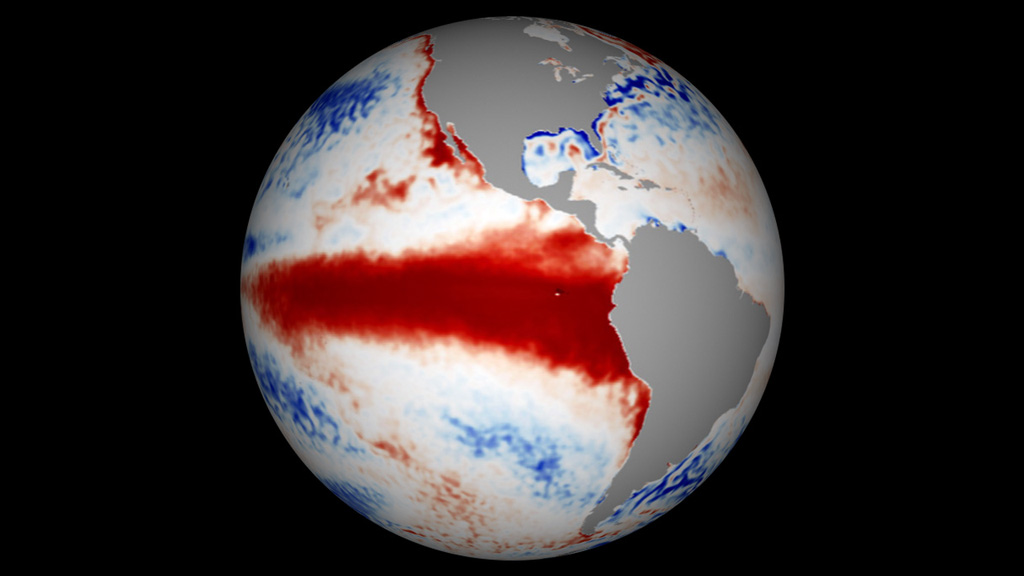Observing the 2015 El Niño
For complete transcript, click here.
People the world over are feeling, or soon will feel, the effects of the strongest El Niño event since 1997-98, currently unfolding in the eastern equatorial Pacific Ocean. New satellite observations are beginning to show scientists its impact on the distribution of rain, tropospheric ozone and wildfires around the globe.
An El Niño, which is a reoccurring natural phenomenon, happens when sea surface temperatures in the equatorial Pacific Ocean warm up. The increased ocean surface temperatures influence air and moisture movement around the globe. Approximately 15 years of observations by NASA's fleet of Earth-observing satellites show how El Niños affect multiple interconnected Earth systems.
Credits
Please give credit for this item to:
NASA's Goddard Space Flight Center
-
Producers
- Kayvon Sharghi (USRA)
- Sophia Roberts (USRA)
-
Video editor
- Sophia Roberts (USRA)
-
Narration
- Kayvon Sharghi (USRA)
-
Narrator
- Sophia Roberts (USRA)
-
Videographers
- Rob Andreoli (Advocates in Manpower Management, Inc.)
- John Caldwell (Advocates in Manpower Management, Inc.)
-
Interviewees
- Doug C. Morton (NASA/GSFC)
- Mark Olsen (Morgan State University)
Release date
This page was originally published on Monday, December 14, 2015.
This page was last updated on Wednesday, May 3, 2023 at 1:49 PM EDT.
